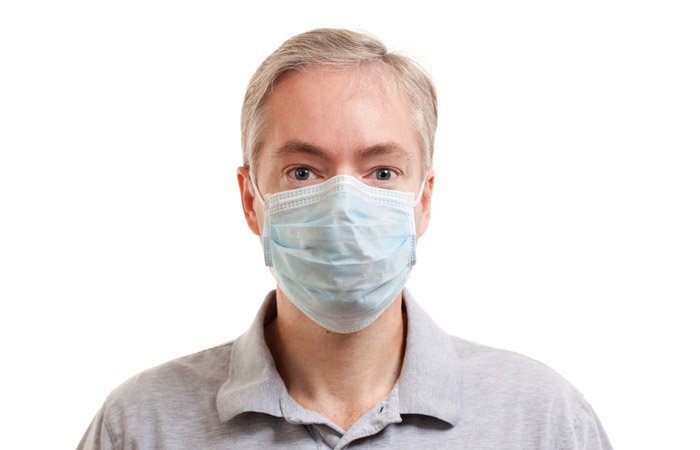Covid-19 symptoms
Covid-19 infects the upper and lower respiratory tracts and is mainly spread by aerosol droplets released by an infected person while sneezing and coughing. These droplets can be inhaled by other people. Some transmission occurs by transfer of the virus from contaminated hard surfaces or contact with the skin of infected people. This is conveyed from the hands to the mouth or the eyes. The virus can survive on hard surfaces for up to 72 hours and for several hours on skin, longer than the cold or flu virus.
Since the emergence of SARS-CoV-2, a number of different variants have been identified with differences in transmissibility and virulence. With most of these variants, the infection becomes apparent around five days after exposure, although this varies. People can spread the virus but have no symptoms.
The period of infectivity also depends on the variant but is usually around five days. Some patients with more severe disease can harbour the virus for much longer.
The most common symptoms attributed to the alpha variant in the first wave of the pandemic were fever, a new and continuous cough, shortness of breath, fatigue, loss of appetite, anosmia (loss of smell) and ageusia (loss of taste). In some people, taste is changed or disturbed.
Other symptoms seen with most variants include headache, muscle pain, sore throat, nasal congestion, chest pain, nausea and vomiting, diarrhoea and skin rashes (especially in younger people). The illness is variable in severity, from asymptomatic to mild respiratory infection in some people, to severe pneumonia in others. Delirium and reduced mobility can occur in the elderly and immunocompromised people, often in the absence of fever.
Early in the pandemic the mortality rate was estimated to be around 1 per cent but was higher in more clinically vulnerable people and the elderly. Severe infections requiring hospital care, intensive care and ventilation have become much less common. Reasons include protection by vaccination, acquired immunity through infection and reduced pathogenicity of variants.
Early treatment with dexamethasone and antivirals is also now known to reduce morbidity and mortality. Studies of the omicron variant – the predominant variant in the UK at the time of writing – show that the most common symptoms are like that of the common cold, including headache, runny nose and sore throat.
Prolonged symptoms and long Covid
The number of people affected with long Covid is considerable and a major concern. In most people the symptoms of Covid-19 resolve completely within four weeks of infection but a sizeable minority (estimated at 10-20 per cent) continue to have symptoms beyond four weeks and are said to have “long Covid”.
The National Institute for Health and Care Excellence (NICE) defines a ‘post-Covid-19 syndrome’, where signs and symptoms continue for more than 12 weeks and are not attributable to alternative diagnoses. There are many effects of this condition – a recent, large systematic review and meta-analysis set out to quantify these (see below).
There does seem to be some evidence that long Covid is seen less with the omicron variants. See PM's CPD module Dealing with long Covid .
Managing acute Covid-19 symptoms at home
Most people have a mild infection that can be treated at home. Patients should be advised to rest and avoid strenuous activity, and to drink fluids regularly to avoid dehydration. Fluid intake needs may be higher than usual in cases of fever. Paracetamol or ibuprofen may help with symptom relief.
NICE advises that people with cough should avoid lying on their backs if possible because this may make coughing less effective at clearing mucus. If people are unable to self-care, have severe symptoms or are immunosuppressed, the advice is to contact NHS 111 for telephone assessment.

